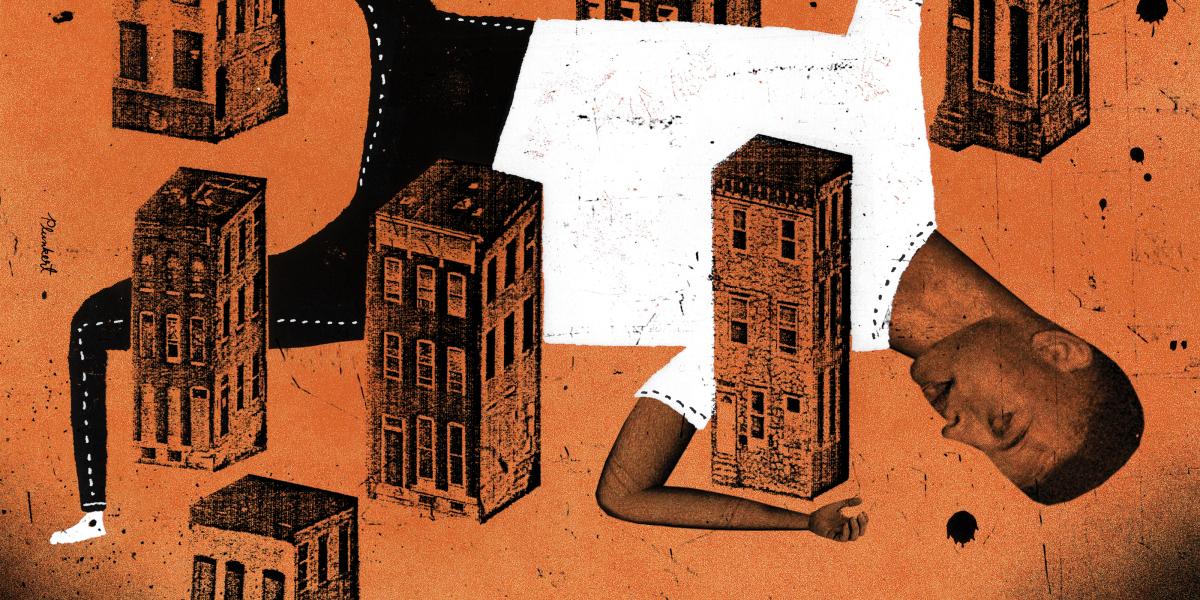Rethinking: Stop Racism, Improve Health
We must fearlessly confront society’s unequal distribution of power and opportunity.
To stop a cholera epidemic raging in London in the mid-19th century, John Snow removed the handle from a Broad Street water pump. His action is still celebrated as the coalescence of sound methodological inquiry with decisive, even political action. Snow didn’t attribute moral blame to the citizens of Broad Street who were relegated to squalid social conditions that abetted the disease outbreak. His action should inspire us today to reimagine public health’s mandate—and to extend that mandate to take bold action against firmly entrenched structural conditions that lead to sickness and disease.
One such structural issue, and a fundamental cause of disease and health disparities facing the city of Baltimore and cities throughout the United States, is racism.
It is America’s contemporary Broad Street pump.
As Camara Jones, president-elect of the American Public Health Association, explains, racism is not only about personal actions. It describes a system of structuring opportunity and assigning value based on the social interpretation of one’s phenotype. This leads to the unfair disadvantage of individuals and communities of color and the unfair advantage to others assigned to the racial category of white.
Unfortunately, too often the conversation in public health fails to appropriately name racism as the culprit in health disparities, downgrading the discourse to more palatable factors of “racial differences,” economic and geographic disparities, or variable access to location-based resources. However, candid and critical conversations about racism, segregation and their effects on health are essential to improving health.
Consider the evidence: In Baltimore, the prevalence of childhood asthma is 38 percent among African Americans, and 11 percent among whites. The prevalence of obesity for African Americans is approximately double that of whites. Infant mortality for African Americans is triple the rate for whites, and mortality from homicide is more than seven times that of whites. A 2008 Baltimore City Health Department report noted the 20-year gap in life expectancy between two neighborhoods less than five miles apart.
Racism can be linked to health disparities in conditions like obesity and asthma through segregation, which has restricted opportunities for well-being by forcing some to reside in substandard housing and neighborhood conditions and limiting access to affordable health promoting resources. Clearly, segregation exerts a much greater influence on health than one’s genes do.
Thus, the insidious gravitational pull of racism on the quality of life needs to be an essential part of the dialogue and broader work of public health training, practice and research.
A racism-informed public health agenda has much to offer cities like Baltimore, which is still reeling from the homicide of Freddie Gray, who died last April after being severely injured in police custody. If the riots of Baltimore and previously mentioned health disparities are to be prevented and fixed, then public health must mobilize around structural reformation that unravels the insidious impact of racism throughout this nation’s history.
Structural reformation means that public health, though it often serves the interest of the state, must adopt strategies that redistribute power to communities, protect the disenfranchised and redress policies steeped in racism. This should begin with humility. Following the Baltimore riots, we at Hopkins invited the community onto campus to talk. A better solution, community members told us, was to show up to their tables—to serve (rather than direct) the priorities and strategies that communities have already been developing to address their challenges. This is a key point: Structural reformation means that the resources and the trust of our profession and institutions are committed to funding the valued innovations originating within communities.

In fulfilling public health’s mission to protect and improve health, we must fearlessly confront the distribution of power and opportunity in society, which allows some communities to thrive and others to deteriorate. Too often, however, social and racial justice work only makes up a small fraction of the public health discipline and is shouldered by those who focus specifically on “health disparities.” Instead, that social and racial justice work should be shared equally across the various branches of the profession. To meet the goal of improving health equitably, all public health professionals must critically examine the role of structural drivers of disparity in their work, such as racism and residential segregation—so that beyond documenting disparities, we move toward a more complete understanding of how racism and racist policies and systems disrupt pathways to health.
For far too long, public health has tethered its research agenda to the whims of outside funding agencies and their own particular systems of privileging and prioritizing suitable areas of inquiry. It is time to emphasize value-based research granting. With this strategy, the criteria for evaluating applications and measuring success is explicitly tied to the extent to which well-designed, strategic research is translated into social programs and policies that work to actively deconstruct systems that oppress individuals of color and limit their well-being.
Public health is inherently antiracist work, as Jennifer Garcia and Mienah Sharif noted in a 2015 American Journal of Public Health article. We must push ourselves beyond the urge to merely help “those in need” and work together with community leaders to deconstruct the racist systems that do not allow everyone the freedom to lead healthy and productive lives.
In working with communities, we should all heed the counsel of Lilla Watson, an indigenous Australian artist and activist, who said, “If you have come here to help me, you are wasting your time. But if you have come because your liberation is bound up with mine, then let us work together.”
